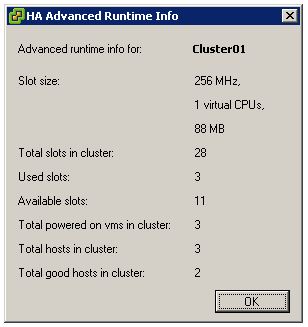Simon Long just posted a new article which is titled; VMware vCenter 4 minimum RAM requirement, is it 2GB or 3GB? Simon found two answers(2GB vs 3GB) in three documents which are listed below:
- VMware’s ESX and vCenter Server Installation Guide
- Scott Lowe’s – Mastering VMware vSphere 4.0
- VMware Education – VMware vSphere 4 Install, Configure, and Manage course books
Now for me the answer is simple. Anything that’s stated in an official VMware document is leading so that would rule out Scott. So what about the course material vs the install guide cause both are VMware documents. Course material usually doesn’t get updated as often as it should. Don’t use course material for specific limits or requirements. Use the official product documentation. Course material should be used to understand the concepts, for specifics use the documentation!
All vSphere documentation can be found here: http://www.vmware.com/support/pubs/vs_pages/vsp_pubs_esx40_vc40.html
These docs should be leading at all times!
